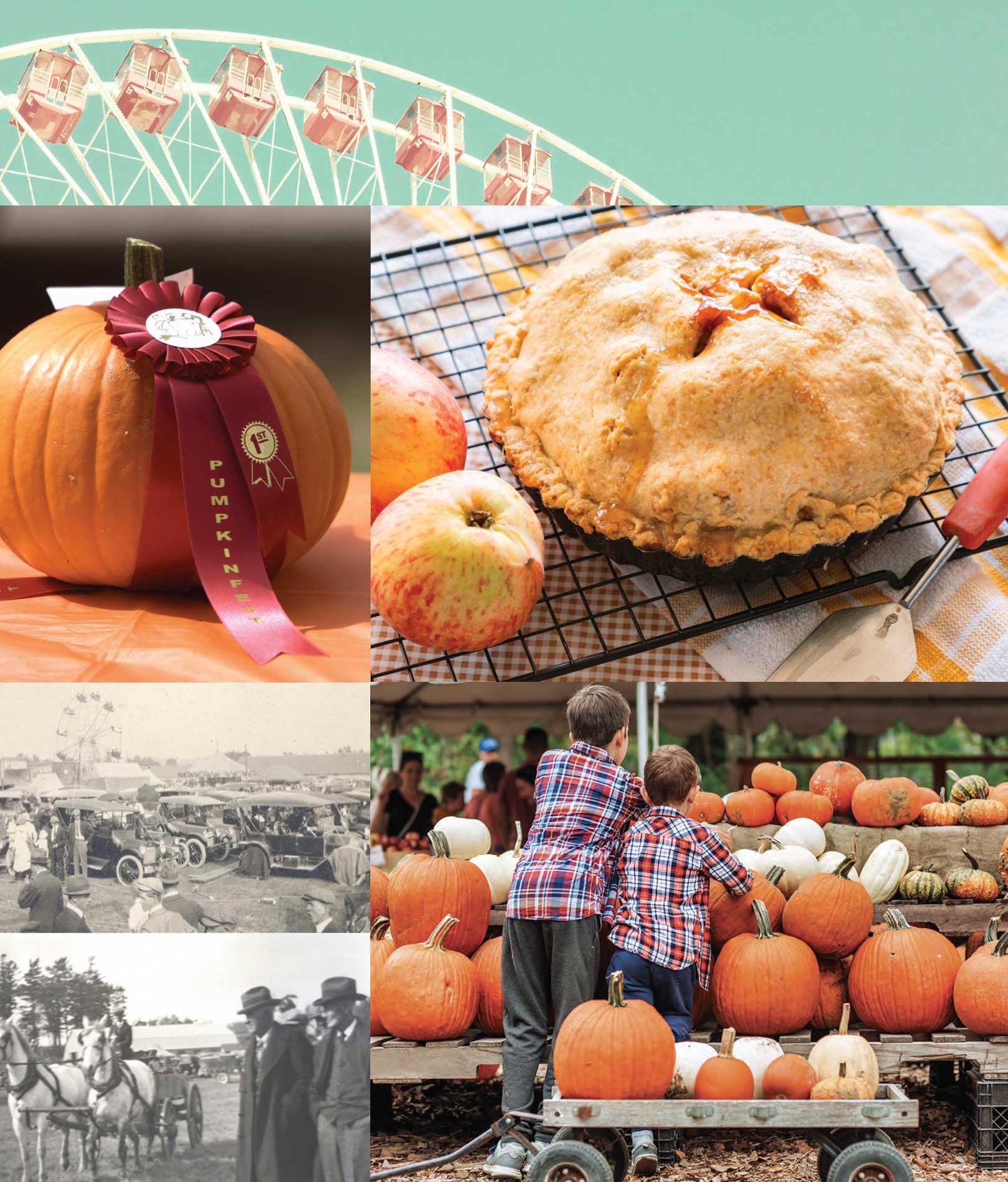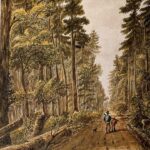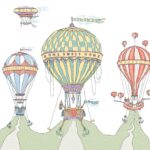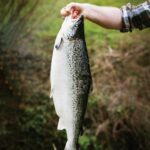
Fall fairs offer many kinds of contests from pumpkins to pies; Prince Edward County Fairgrounds circa 1920, courtesy of PEC Archives; and Clarence Brooks showing his team at the Roseneath Fair in 1916, photograph courtesy Northumberland County Archives & Museum; pumpkins on display;

Left to right: from sheep shearing to vintage tractor shows the fall fairs are sure to delight; Brighton Fair in the 19th century; photograph courtesy Northumberland Archives & Museum

Left to right: 4-H dairy cattle show and prize winning preserves; Brighton Fair in bygone days; photograph courtesy Northumberland Archives & Museum
Lift your cake out of the oven and enter the “Beet Bundt Cake” category at the Port Hope Fair. If you’re young enough, you and your horse should try the “Teen Youth Barrel” competition at the Picton Fair. You (or preferably your cow) could take home the “Best Udder” prize at the Norwood Fall Fair. Or if you’re in Warkworth, enter your handiwork in their Embroidered Pillow Case competition. Be warned, should you enter the Heavy Pony Pull at the Roseneath Fair, there is “no cursing or beating horses” permitted. If you prefer to be a spectator, then gaze on the splendours of the Best Pink African Violet among the many exhibits and wonder at the Largest Tomato at the Campbellford Fair.
It was mid-July and Marie Timlin was watching for rain clouds, asking herself whether they would get the hay in. She had already picked four quarts of raspberries that morning. There were sixty or so animals – cattle, horses, goats and chickens – to be looked after. Then she had to carve out some time over the coming days to organize the canning, the baking and the quilting categories for the Roseneath Fair. Her mother-in-law had done it before her, and seventy years ago Mrs. James (Neta) Timlin had done the same thing as the first leader of the Ladies Section. Farm households like the Timlins’ have kept fall fair traditions going for generations.
THE THRILL OF VICTORY
Competition among farmers for the top titles in cattle and crops and among their wives in homecraft was always keen and still is. Fairs are serious business. “Oh yes. You get competition in families,” says Marie Timlin. “Grandmas will compete against daughters for their pickles. Sons against mothers when it comes to flowers.” Timlin is a seasoned observer. “After the judging, when people come in to check who won what, you can sit in the corner and get quite a few giggles.”
Reputations are on the line. Timlin knows that the prestige of the title for best quilt or best knitted socks can lure exhibitors to the dark side. Cheating happens. “You can’t have people picking up a pair of hand-knitted mitts at the second-hand shop and entering them as their own work. That’s why you have to include samples of the wool or the fabric with your entry in any of the knitting or handicraft categories.” Fall fair competitions are about a lot more than the $20 prize money.
A HISTORICAL CORNERSTONE
Back in the days when family farms were the backbone of the rural economy, governments supported fairs to encourage progressive agricultural methods, showcase innovation and introduce the most recent equipment and technology. Equally important, fall fairs were a gathering place, a social event. Cousins who hadn’t seen each other in a year took the buggy ride into town to meet at the fair. Port Hope had a fall fair as early as 1831, and seven years later Picton followed suit. Tiny towns like Roseneath and Warkworth have put on fall fairs since the 1850s. So has Campbellford. Norwood, population less than 5,000, pulls in at least 30,000 visitors for its fair every Thanksgiving weekend. Between now and the end of October, there will be urbanites wrinkling their noses at the scent of manure, car enthusiasts polishing their 1950s’ Fords and Chevys, connoisseurs taste-testing butter tarts and almost 100,000 visitors flocking to the area.
VOLUNTEERING
The mandate of fall fairs remains the promotion of agriculture, but agriculture no longer dominates the economy. In 1910, there were more than a million farm workers in Ontario; now there are fewer than eighty thousand. Fall fairs can’t rest on the shoulders of the farmers alone, nor can they rely exclusively on the men. Women weren’t allowed to run things back in the day but things have changed. Like every other organization, fall fair boards are looking for more volunteers to keep things going.
Recruiters pounce on anyone who looks the least bit interested. Janet Torrance is vice president in charge of fundraising for the fair in Warkworth. The Torrances were looking after the youth group at their church, and her husband’s first job with the fair was organizing the parking. Now he’s involved up to his neck. Christine Milligan – who works for the federal government – is also on the all-female executive.
Warkworth is a growing village that’s attracting all sorts of people, often artsy types. The Torrances say that they are assimilating nicely; and fair organizers aim to find a place (and a job) for everyone who wants to help.
The Picton Fair, says the County’s Lynn Ward, has not been as successful in folding in the area’s vintners, a distinct and different agricultural group. Ward, who comes from a farm family, has been in charge of 4-H – originally an agricultural club for young people that was set up in 1913 – for thirty years. There are 4-H categories in nearly all the fairs, chances for the kids to “highlight what they have done over the years with the animals they have raised.”
Picton, a huge tourist destination in the heart of Prince Edward County, will pull in 30,000 visitors over its three days and the Port Hope Fair drew 16,000 people last year. But the agreed champion of fall fairs in the region is the Norwood Fair on Thanksgiving weekend.
Ward points out that “The focus is on the kids rather than the animals. How well they know their animals, how well they show them.” That to Ward is what it’s all about: keeping agriculture going for kids. “There are lots of city kids who don’t know where milk comes from,” she laughs. This year they’ve got 38 kids exhibiting in the dairy category in Picton, and despite a decline in the number of farmers across the country, membership in 4-H is up 15 percent.
BEYOND LIVESTOCK AND CROPS
Over the years, fall fairs have increasingly had to balance their agricultural mandate with fun and slightly bizarre events to bring in the crowds, and all the fairs have added more and more music. The baby competition was cancelled at the CNE over fifty years ago (it was considered exploitative), but wandering crowds love competitions for the baby with the Toothiest Grin, and several of the regional fairs have kept them going. Then there are umpteen prizes for Mutts with the Loudest Bark or the Longest Ears. The Campbellford Fair boasts the Tim Burr Circus Lumberjack Show, and the Demolition Derbies always pull in the crowds. In Warkworth, the biggest event is the elimination car draw – the last ticket pulled gets the car (this year it’s a brand new Nissan).
Picton, a huge tourist destination in the heart of Prince Edward County, will pull in 30,000 visitors over its three days and the Port Hope Fair drew 16,000 people last year. But the agreed champion of fall fairs in the region is the Norwood Fair on Thanksgiving weekend.
In its biggest year, 56,000 people came through the gates of the Norwood Fair. Board member Jeff Dornan says they have a thousand exhibitors entering everything from beef cattle to needlework competitions. Dornan has been coming to the fair since he was a little boy. It’s part of who he is. The Fair strives to stay close to the agriculture mandate, he says. “Norwood prides itself on closing the gates at 5:00 p.m. and staying away – for the most part – from motor sports.”
In the early days, at the end of the 19th century, there were horse races up and down what’s now Highway 7. The horse races are long gone, but Norwood is the last fair in the season, the last chance this year to ride the midway, to contemplate perfect butter tarts (no raisins), to watch the Xtreme Cowboys, to size up half a dozen Clydesdales and Percherons – 12,000 pounds of horseflesh – to smile at children’s artwork and to latch onto the well-cultivated spirit of community and entertainment that fall fairs bring.
REGIONAL FAIRS
CAMPBELLFORD FAIR
Aug. 9-11
PICTON FAIR
Sept. 6-8
WARKWORTH FAIR
Sept. 6-8
“Old Traditions, New Experiences”
PORT HOPE FAIR
Sept. 12-15
“Sow it, Grow it, Show it”
ROSENEATH FALL FAIR
Oct.4-6
NORWOOD FALL FAIR
Oct. 12-14
“Country Roads Take Me Home”
Story by:
Karin Wells



